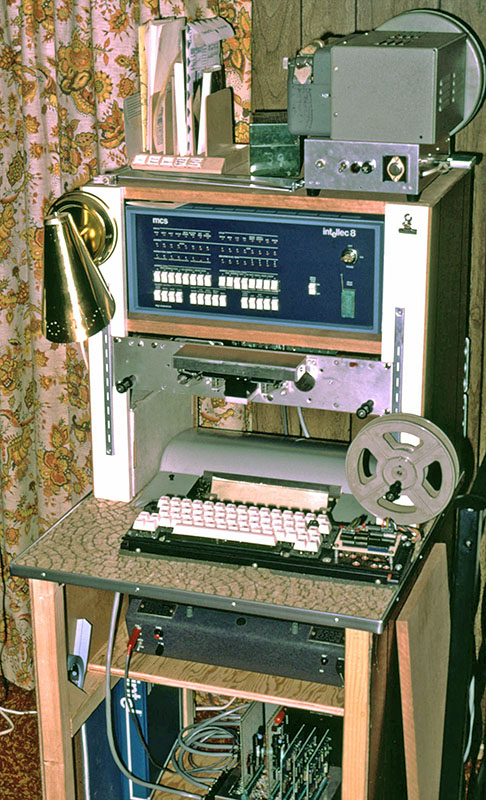In 1974, Intel introduced the 8080 microprocessor, and I immediately was hooked on these cool devices.

The company where I worked bought an Intellec 8/80 microprocessor development system. When I saw what it could do, I squeezed my saving account and dropped $4,000 on one for myself. I built a "console" for it, a keyboard, a Teletype printer, a high-speed paper tape punch, and a hyper-speed reader. I spent many happy hours writing 8080 assembly language programs that I "burned" into 1702 UV-erasable EPROMs and ran on wire-wrapped circuit boards.
This setup was in my third mobile home, opposite the radio shack.
The paper tape punch and reader deserve special mention. The punch was manufactured by Soroban, and punched 8-bit ASCII tape at 65 characters per second. This was blazingly fast when Teletype machines chugged along at 10 cps. The punch had a continuously rotating camshaft in an oil-filled sump. Solenoids inserted and retracted tiny pins between the cams and the punches, to punch appropriate holes in the tape. This punch was fast, and it got hot when it ran.
The optical tape reader was even faster – 600 characters per second! It had a continuously rotating rubber-covered capstan (#4, photo below) with a rubber pinch wheel above. When reading, a solenoid engaged to press the pinch wheel against the rotating capstan. This pulled the paper tape from right-to-left under an electromagnet (1) with a flat metal "flapper" plate below the tape, over the optical reading head (2), and through a second electromagnet/flapper (3).

The paper tape fed from the gray plastic spool on the right side of the console (above), and would fly out the left side more than three feet before reaching the floor. I added a crank handle to the spool to rewind the tape.
Not only could this reader read fast, it could stop on a single character! When the controlling software told it to stop, the two electromagnets would snap their flapper plates up to trap the tape instantly. The capstan continued to rotate against the pinch-wheel-trapped tape for a second or two, until the pinch wheel released. It was awesome!
Due to the extreme forces and wear caused by the spinning capstan and electromagnet flappers, Myar tape lasted longer in this reader than oiled paper tape.
Updated April 18, 2025